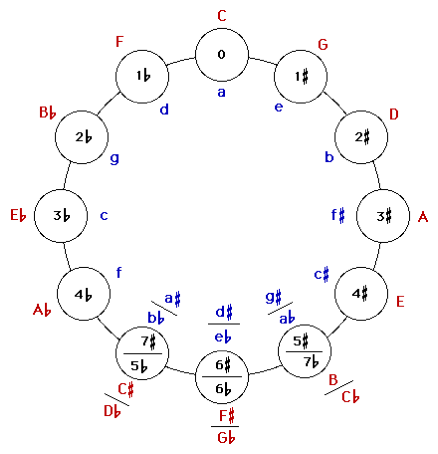 |
|
 |
 |
 |
 | Some find it easier to learn the key signatures by visualizing what is called a circle of fifths. Notice, on the diagram below, that as you go clockwise around the circle each consecutive key begins on the fifth scale degree of the previous key.
|
 |
 |
 |
 |
 |
 | Notice the blue letters on the inside of the circle. These represent the minor keys. Also notice, that each major key has a corresponding minor key. The key signatures for each major scale are the same for each of the relative minor scales. The relative minor scales are built on the sixth scale degree of the major scale and retain the same key signature.
Note: the major keys are generally indicated by capital letters; the minor keys, by lower case letters.
Mention should be made at this point about enharmonic notes. Notice at the bottom of the Circle of Fifths the tonal centers that "overlap." Enharmonic notes are pitches that share the same piano key but are spelled with different letter names. Example: a-sharp is played by the same piano key as b-flat; d-sharp is the same piano key as e-flat; and g-sharp is the same as a-flat. For theoretical purposes, a-sharp IS NOT the same as b-flat -- they each fit in different musical schemes and have different functions. When played on the piano, apart from any musical context, the two enharmonic pitches sound identical.
|
 |
 |
|


 |
 |
 |
